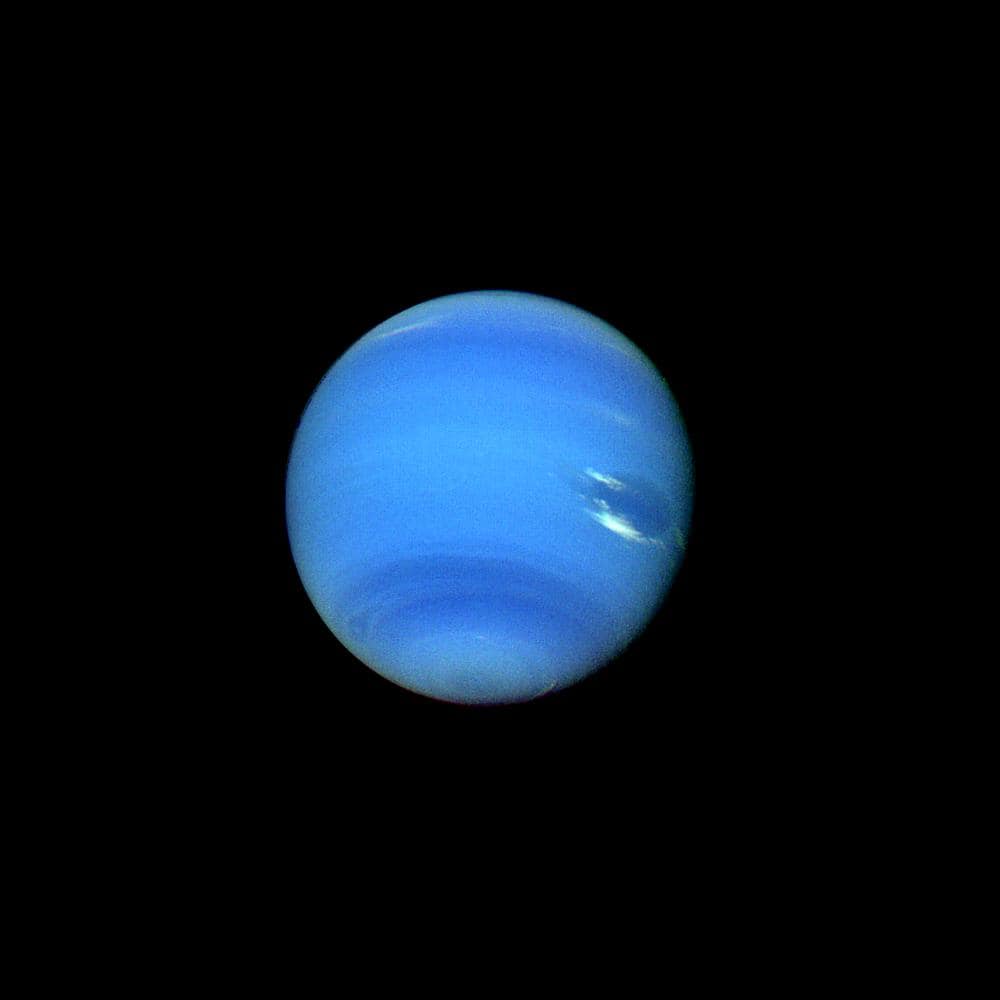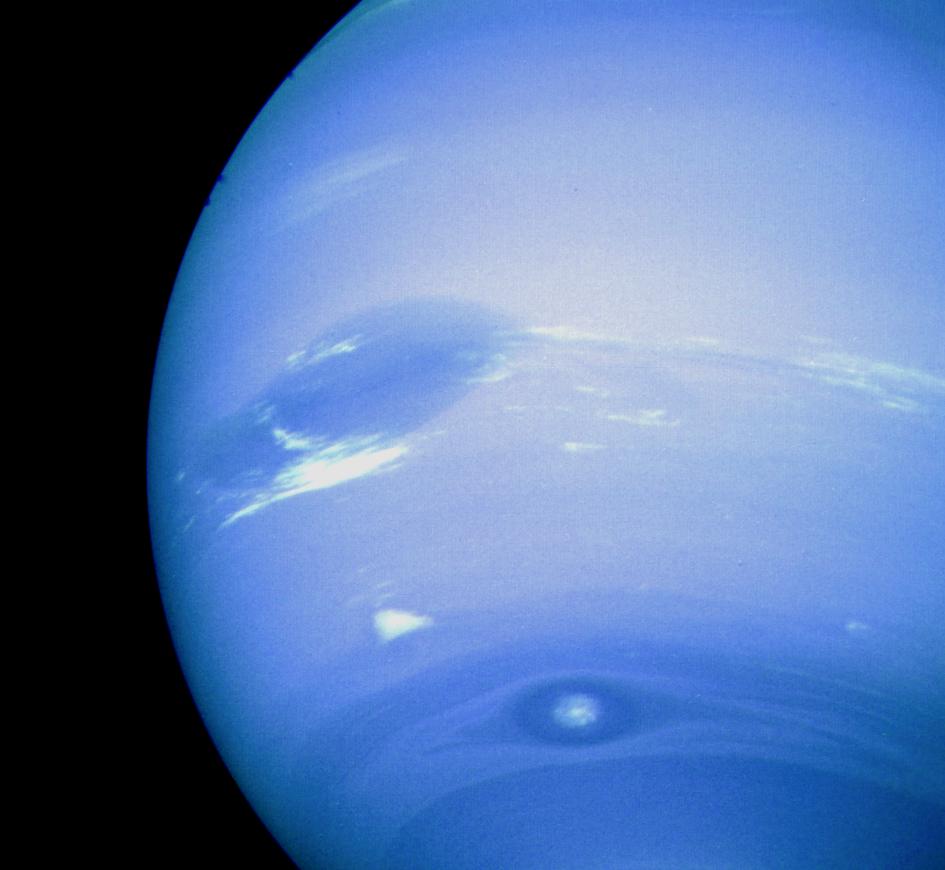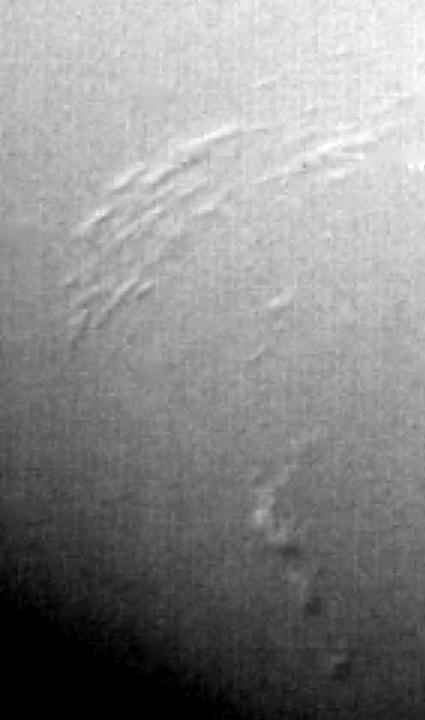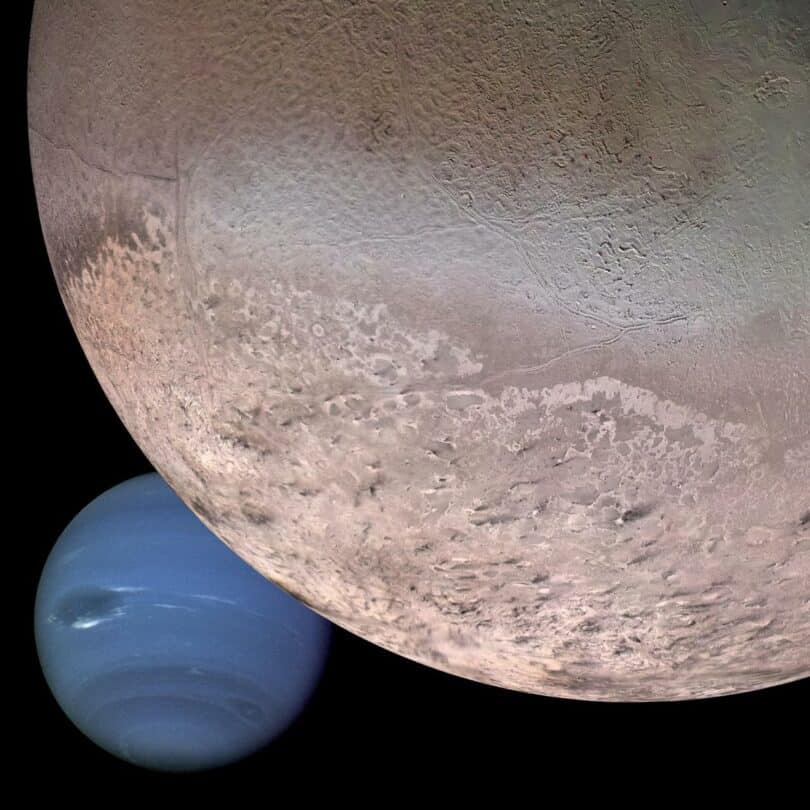Neptune stands out in our solar system as the most distant of the eight planets from the Sun.
Neptune is a gas giant, covered by thick, icy clouds, and is known for having some of the most extreme weather in the solar system.
At nearly 3 billion miles from the Sun, it takes 164.79 Earth years to complete one orbit, meaning its surface experiences incredibly low temperatures, averaging around -201°C.

This remote planet may seem like a quiet, dark sphere from a distance, but upon closer inspection, we uncover a dynamic world with a fascinating atmosphere.
Composed mainly of hydrogen, helium, and traces of methane, Neptune’s signature blue color is attributed to methane’s absorption of red light.
Understanding Neptune’s surface is challenging, as the planet does not have a traditional solid ground like Earth or Mars.
Instead, beneath the thick atmosphere lies an Earth-sized core surrounded by a complex layer of water, ammonia, and other ices, giving us insight into a world dramatically different from our own.
Despite receiving less sunlight than its neighbor Uranus, Neptune radiates a surprising amount of internal heat, which may contribute to its intense atmospheric activity.
Uncovering Neptune
Neptune, the eighth planet from the Sun, was not discovered through direct observation but rather through the power of prediction and mathematics.

Neptune’s existence was first inferred by irregularities in the orbit of Uranus.
Astronomers concluded that these peculiarities were due to the gravitational pull from an unknown planet.
In 1846, the prediction of Neptune’s location in the sky was made through mathematical calculations.
Who Discoverd Neptune?
The discovery of Neptune is credited to Johann Gottfried Galle, who confirmed its existence by telescope on September 23, 1846.
However, it was Urbain Le Verrier and John Couch Adams who separately calculated the predicted position of Neptune.
Galle used Le Verrier’s calculations to direct his telescope to the correct location in the sky, leading to one of the most significant astronomical discoveries of the 19th century.
Neptune’s Characteristics
We begin our exploration of Neptune by examining its distinct physical properties, understanding its atmospheric composition, and delving into its orbital dynamics.
These aspects collectively define Neptune as the intriguing ice giant that captures our curiosity.
Physical Properties Of Neptune
Size and Mass: Neptune boasts a diameter of roughly 49,244 kilometers, making it the fourth-largest planet in our solar system.
Despite its size, it only has a mass that is 17 times that of Earth. This ratio points to a density much lower than that of terrestrial planets.
Core: Beneath its gaseous outer layers, Neptune harbors a solid core. This core is surrounded by a dense mixture of water, ammonia, and methane ices.
Gravity: With a gravity that is 1.14 times that of Earth, Neptune’s gravitational pull significantly influences its moons and the particles within its ring system.
Atmospheric Composition
Hydrogen and Helium: Neptune’s atmosphere is predominantly composed of hydrogen and helium, the lightest and most abundant elements in our universe.

Methane: Trace amounts of methane found in Neptune’s atmosphere are responsible for its characteristic blue hue by absorbing red light and scattering the blue.
Orbital Dynamics
Distance from the Sun: Neptune orbits the sun at an average distance of 4.5 billion kilometers, which influences its temperature and the dynamic processes within its atmosphere.
Moons and Rings: As Neptune travels in its remote orbit, it is accompanied by a collection of moons and six distinct ring systems, indicative of its complex gravitational interactions.
By examining these characteristics in detail, we gain a better understanding of Neptune’s place within the cosmic landscape of our solar system.
Neptune’s Moons and Rings
Neptune, the eighth planet from the Sun, hosts a collection of 14 known moons and a faint but intricate ring system.
Among its moons is Triton, an icy giant that holds the title of Neptune’s largest moon. As for its rings, they are composed of fine dust and are a subtle feature of this distant planet.
Major Moons
Triton dominates our discussion of Neptune’s moons due to its impressive size and unique characteristics.
Triton is not only the largest moon of Neptune but also one of the coldest objects in our solar system.

Unlike most major moons in the solar system, Triton follows a retrograde orbit, meaning it moves in the opposite direction of Neptune’s rotation.
This intriguing moon was discovered by British astronomer William Lassell in 1846, just 17 days after Neptune itself was found.
Triton is enveloped in a thin atmosphere and is primarily composed of frozen nitrogen with a geologically young surface that hints at cryovolcanic activity.
Ring System
Neptune’s ring system is much less conspicuous than those of other gas giants, such as Saturn.
Our observations reveal five main rings named Adams, Leverrier, Lassell, Arago, and Galle, after the astronomers who made significant discoveries regarding the planet.
The Adams ring is notable for its five distinct arcs, areas where the particles are clumped together, creating brighter sections within the ring.
These arcs are named Fraternité, Égalité 1 and 2, Liberté, and Courage.
The composition of Neptune’s rings is primarily small amounts of dust, which makes them difficult to observe and faint in comparison to other planetary rings in our solar system.
Exploration and Observation
We have gained much of our knowledge about Neptune through a combination of advanced space missions and extensive telescope studies. These efforts have offered us a clearer understanding of this distant, icy world, its attributes, and its place in our solar system.
Voyager 2 Flyby
The only spacecraft to visit Neptune was Voyager 2, which conducted a historic flyby on August 25, 1989.
This flyby provided us with priceless data, such as close-up images of the planet’s atmosphere and its intriguing moons.

Voyager 2’s journey brought into focus features like Neptune’s faint ring system and several of its moons that were previously undiscovered.
The flyby confirmed the existence of the Great Dark Spot, a vast storm similar to Jupiter’s Great Red Spot.
Telescope Studies
Our continued observation of Neptune comes largely from astronomers using powerful telescopes, such as the Hubble Space Telescope.
Through telescope studies, we can monitor atmospheric changes, track storms, and observe Neptune’s dynamic environment from Earth.
The Hubble Space Telescope, in particular, has been pivotal in our ongoing exploration of Neptune, allowing us to study the planet in wavelengths not visible to the naked eye and with much greater detail than previous ground-based telescopes.
By combining our findings from Voyager 2 and the telescope studies, we continue to enrich our understanding of the eighth planet in our solar system.
Frequently Asked Questions
What is the average surface temperature of Neptune?
Neptune experiences extremely cold average surface temperatures of approximately -214 degrees Celsius (-353 degrees Fahrenheit), making it one of the coldest planets in our Solar System. More on Neptune’s temperature.
How large is Neptune compared to other planets in the Solar System?
Neptune is the fourth-largest planet by diameter and the third-largest by mass in our Solar System. It’s notably smaller than the gas giants Jupiter and Saturn but is similar in size to its near-twin Uranus.
What is Neptune primarily composed of?
The composition of Neptune is predominantly a mix of hydrogen and helium, with traces of water, ammonia, and methane, which give it a striking blue color. Read about Neptune’s composition.
Can you describe the features of Neptune’s atmosphere?
Neptune’s atmosphere consists of hydrogen, helium, and methane gas. It’s characterized by the fastest winds in the Solar System, reaching speeds of up to 2,160 kilometers per hour, which are much stronger than the winds on Earth. Explore Neptune’s atmospheric features.
Does Neptune have any rings or moons, and if so, how many?
Yes, Neptune has a total of 14 known moons and six faint ring systems, with some rings containing ring arcs or clusters of dust particles. Discover more about Neptune’s rings and moons.
What is the duration of one day on Neptune?
A day on Neptune, the period it takes to complete one rotation on its axis, is roughly 16 hours, making it one of the shorter days of all the planets in our Solar System. Find out about a day on Neptune.


